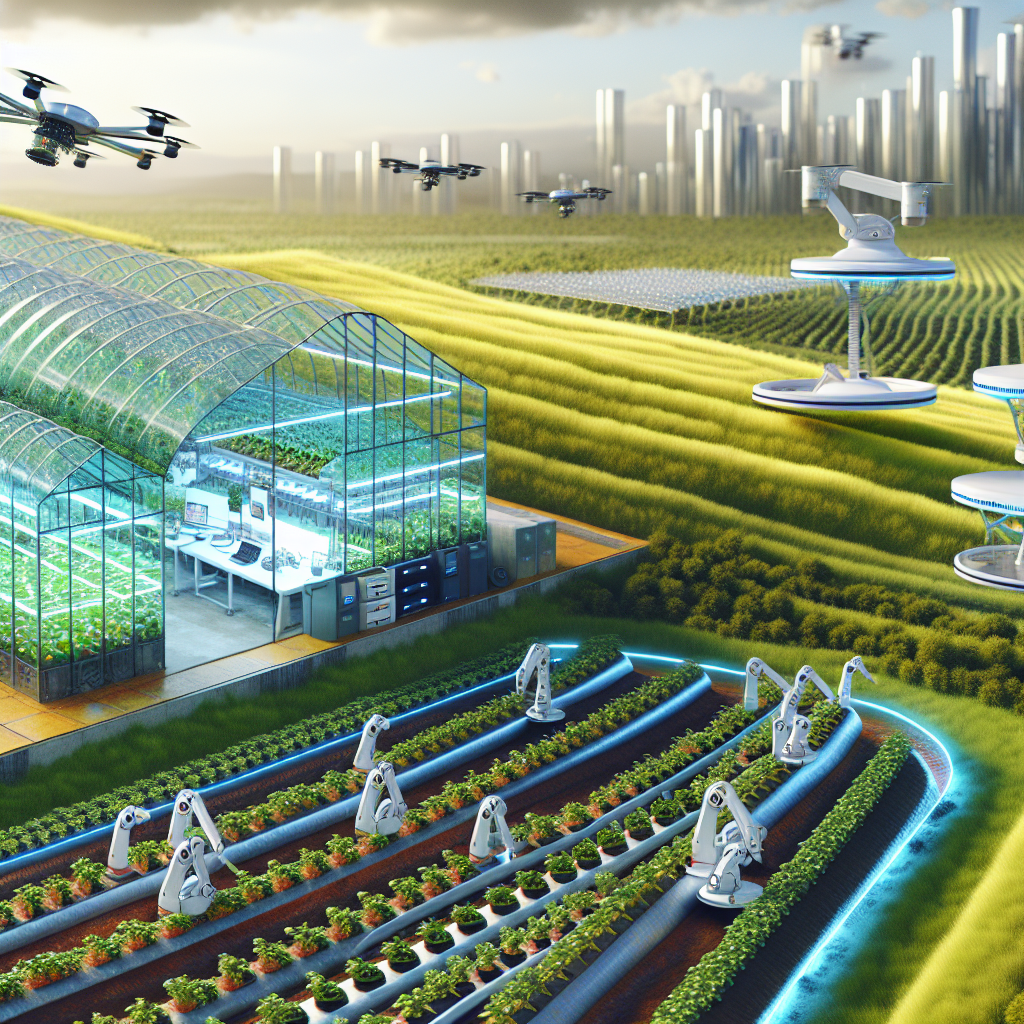-
- AI in Autonomous Urban Agriculture Systems
- Understanding Autonomous Urban Agriculture
- Configuration Steps for Implementing AI in Urban Agriculture
- Step 1: Assess Your Needs
- Step 2: Choose the Right Technology
- Step 3: Set Up Your Infrastructure
- Step 4: Train Your AI Models
- Step 5: Monitor and Optimize
- Practical Examples of AI in Urban Agriculture
- Example 1: AeroFarms
- Example 2: Urban Crop Solutions
- Best Practices for AI-Driven Urban Agriculture
- Case Studies and Statistics
- Conclusion
AI in Autonomous Urban Agriculture Systems

As urban populations continue to grow, the demand for sustainable food production methods has never been more critical. Autonomous urban agriculture systems, powered by artificial intelligence (AI), offer innovative solutions to meet this demand. These systems not only enhance food security but also promote environmental sustainability by optimizing resource use. This guide explores the integration of AI in urban agriculture, providing actionable steps, practical examples, and best practices for implementation.
Understanding Autonomous Urban Agriculture
Autonomous urban agriculture refers to the use of technology, particularly AI, to manage and optimize agricultural practices in urban settings. This includes vertical farms, rooftop gardens, and hydroponic systems that can operate with minimal human intervention. AI plays a crucial role in monitoring plant health, managing resources, and predicting yields, making urban agriculture more efficient and sustainable.
Configuration Steps for Implementing AI in Urban Agriculture
To successfully implement AI in autonomous urban agriculture systems, follow these configuration steps:
Step 1: Assess Your Needs
- Identify the type of crops you want to grow.
- Determine the scale of your operation (e.g., small rooftop garden vs. large vertical farm).
- Evaluate the available space and resources.
Step 2: Choose the Right Technology
- Select sensors for monitoring environmental conditions (temperature, humidity, light).
- Choose AI software for data analysis and decision-making.
- Consider automation tools for irrigation and nutrient delivery.
Step 3: Set Up Your Infrastructure
Install the necessary hardware and software components:
- Set up sensors in the growing area to collect data.
- Install a central processing unit (CPU) to run AI algorithms.
- Connect all devices to a network for data sharing.
Step 4: Train Your AI Models
Utilize historical data to train your AI models:
- Gather data on plant growth, environmental conditions, and resource usage.
- Use machine learning algorithms to analyze this data and predict outcomes.
- Continuously refine your models with new data for improved accuracy.
Step 5: Monitor and Optimize
Once your system is operational, continuously monitor its performance:
- Use AI to analyze real-time data and make adjustments as needed.
- Implement feedback loops to improve system efficiency.
- Regularly update your AI models with new data.
Practical Examples of AI in Urban Agriculture
Several organizations are successfully implementing AI in urban agriculture:
Example 1: AeroFarms
AeroFarms utilizes AI to optimize its vertical farming operations. By analyzing data from sensors, the company can adjust light, water, and nutrient levels to maximize crop yields while minimizing resource use. Their system has demonstrated a 95% reduction in water usage compared to traditional farming methods.
Example 2: Urban Crop Solutions
This company employs AI-driven climate control systems in their indoor farms. By using machine learning algorithms, they can predict the optimal growing conditions for various crops, resulting in faster growth cycles and higher quality produce.
Best Practices for AI-Driven Urban Agriculture
To enhance the performance and efficiency of your autonomous urban agriculture system, consider the following best practices:
- Integrate multiple data sources for comprehensive analysis.
- Regularly calibrate sensors to ensure accurate readings.
- Utilize cloud computing for scalable data processing and storage.
- Engage with local agricultural experts to stay updated on best practices.
Case Studies and Statistics
Research indicates that AI can significantly improve urban agriculture outcomes:
- A study by the University of California found that AI-driven systems can increase crop yields by up to 30%.
- According to a report by the Food and Agriculture Organization (FAO), urban agriculture can reduce food transportation costs by 50% when implemented effectively.
Conclusion
The integration of AI in autonomous urban agriculture systems presents a transformative opportunity to address the challenges of urban food production. By following the outlined configuration steps, leveraging practical examples, and adhering to best practices, urban farmers can create efficient, sustainable systems that meet the growing demand for food in cities. As technology continues to evolve, staying informed and adaptable will be key to success in this dynamic field.